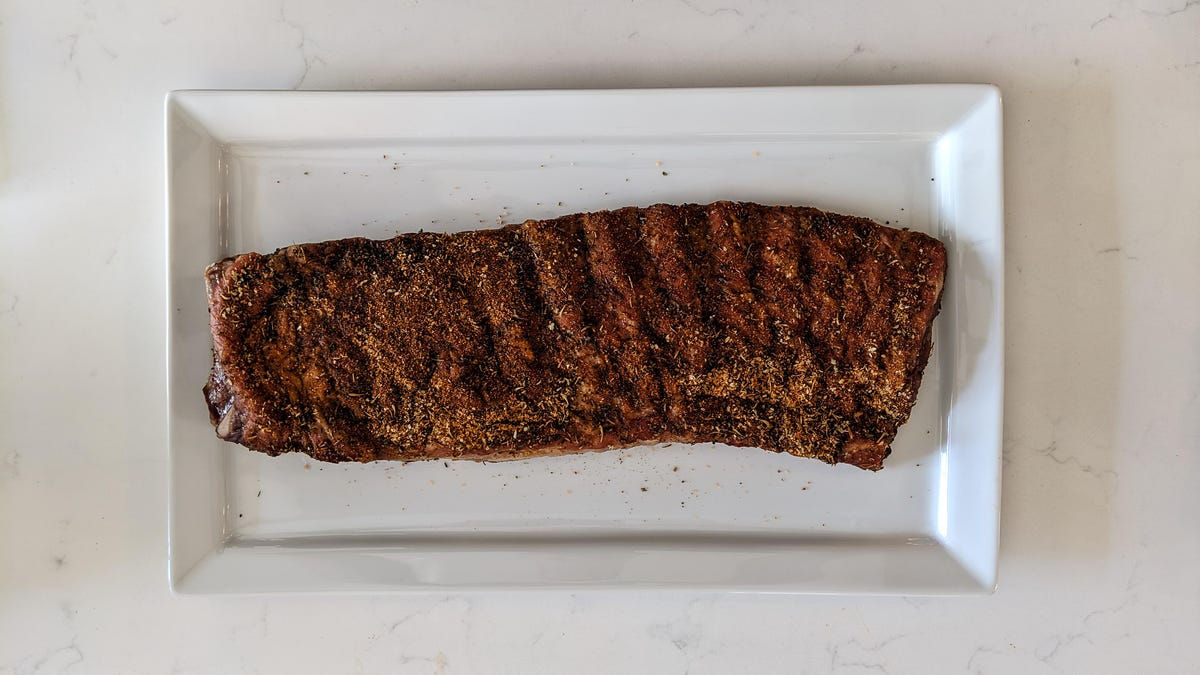In order to determine the best gas grill and gain insight into how these grills perform in various cooking scenarios, we conduct three different tests. These tests allow us to observe how well and evenly the grill cooks under different conditions and temperatures.
Ribs
Our first test involves cooking ribs. We begin by preheating each grill on high for 10 minutes before turning off one or two burners to create indirect heat, depending on the size of the grill. We remove the outer skin from the pork back ribs, season them, and let them cook on low heat with the lid closed for at least three hours.
Rib roasting takes three hours at low, indirect heat.
While the low and slow cooking method may not be favored by rib enthusiasts, it allows us to see how well a regular propane grill can handle this style of cooking. We continue cooking the ribs until they are done, noting the total cooking time.
Chicken
For our second test, we grill a whole chicken using medium heat and a midrange cooking time. We begin by preheating the grill on high for 10 minutes before reducing the heat to medium and turning off the burners for indirect heat. After preparing and seasoning the chicken, we place temperature probes on each chicken breast to monitor the internal temperature. The chickens are cooked until both breasts reach a food-safe temperature of 165 degrees Fahrenheit.
All chickens are cooked over indirect, medium heat until both breasts reach 165 degrees F.
During this test, we use temperature probes connected to a data logger and a laptop with software that records the internal temperature of each chicken breast every two seconds. This ensures accurate monitoring of the cooking process. We cook each chicken until both breasts reach the desired temperature, resulting in crispy skin and fully cooked but moist meat. The test is conducted in multiple rounds to enable sufficient cooking time on each grill.
Burgers
The final test for our grill reviews involves cooking burgers. We measure 5.3 ounces of 80/20 beef and form them into equal-sized patties. With the grill preheated on high for 10 minutes, we place the patties in a grill basket and insert a temperature probe between each patty. After six minutes of cooking, we turn the basket and check the internal temperature. Once the last burger reaches a food-safe temperature of 145 degrees Fahrenheit, the batch is considered done. The ideal burger for this test has a well-textured outer surface and a pink center.
Burgers go on the grill at a hot, high temperature.
We also use a Burger Gauge to identify any hot spots on the cooking surface. If one burger reaches 145 degrees Fahrenheit before the others, it suggests uneven heating. During testing, a 15- to 20-degree difference between the fastest and slowest cooking patties was common. However, a 30- to 40-degree difference raises concerns.














